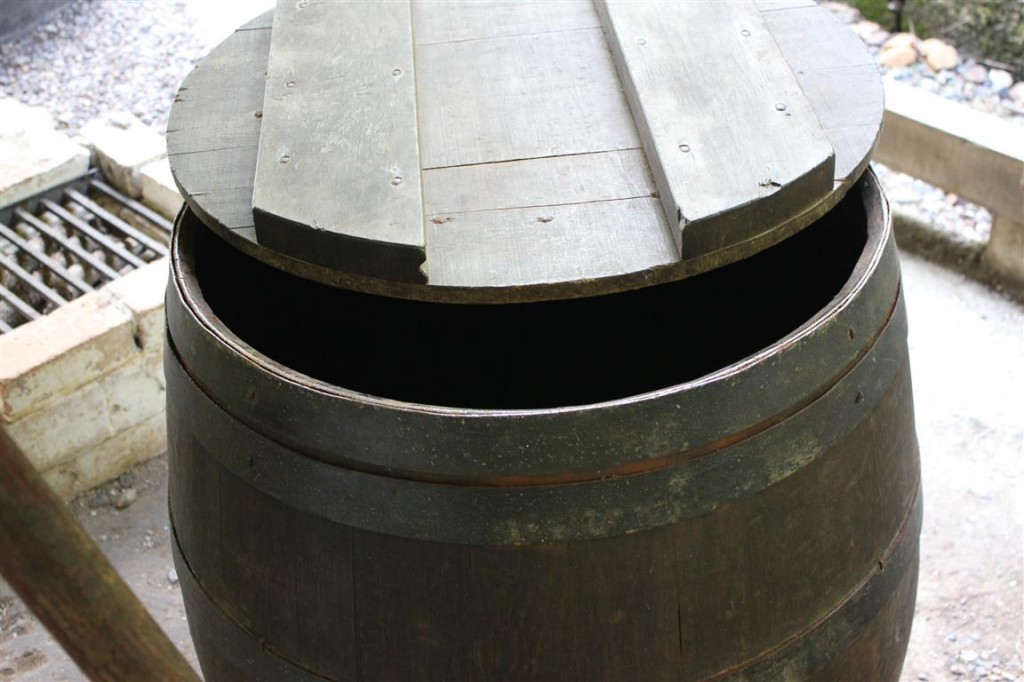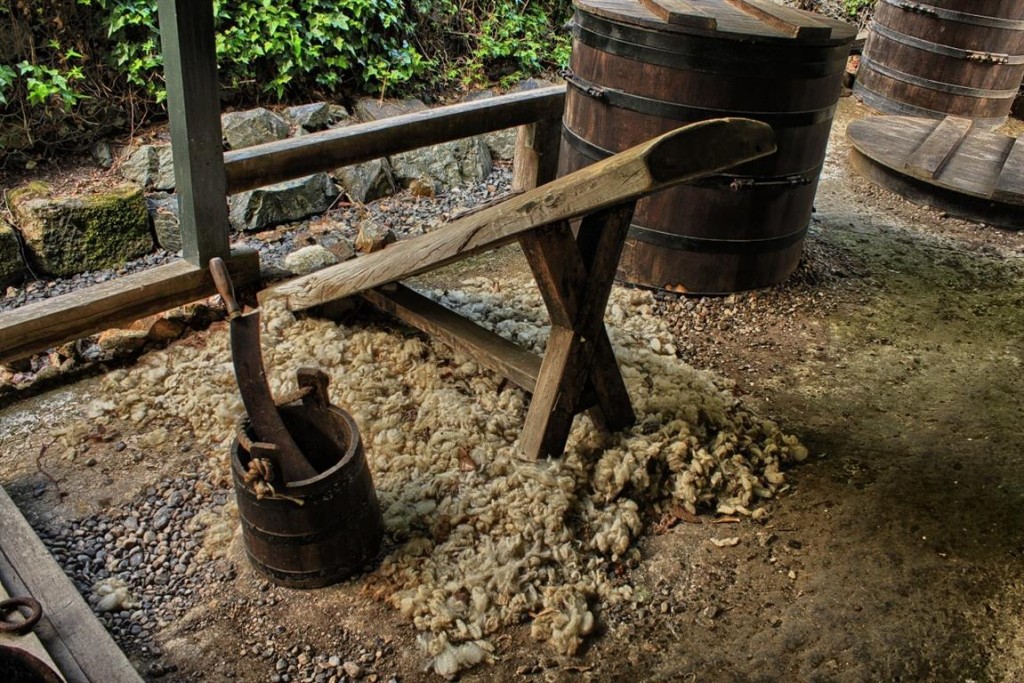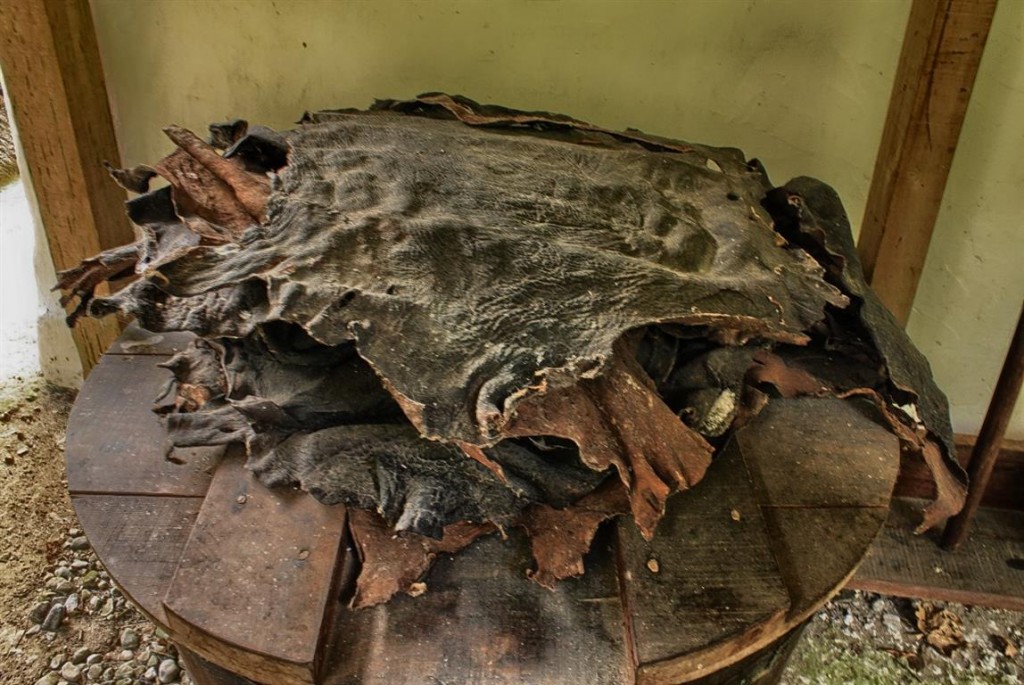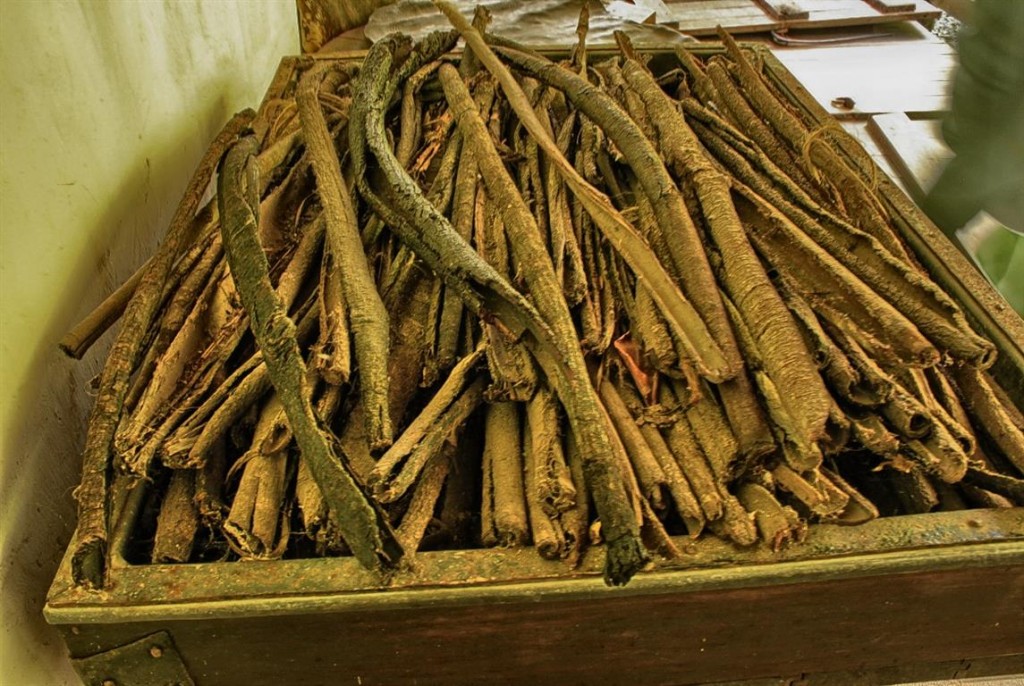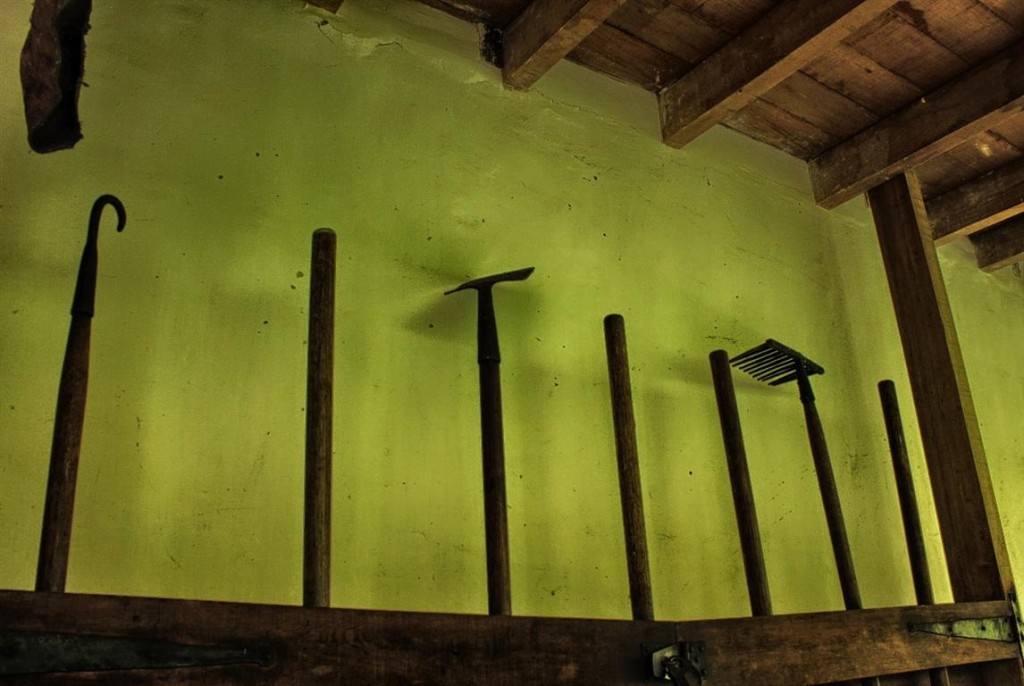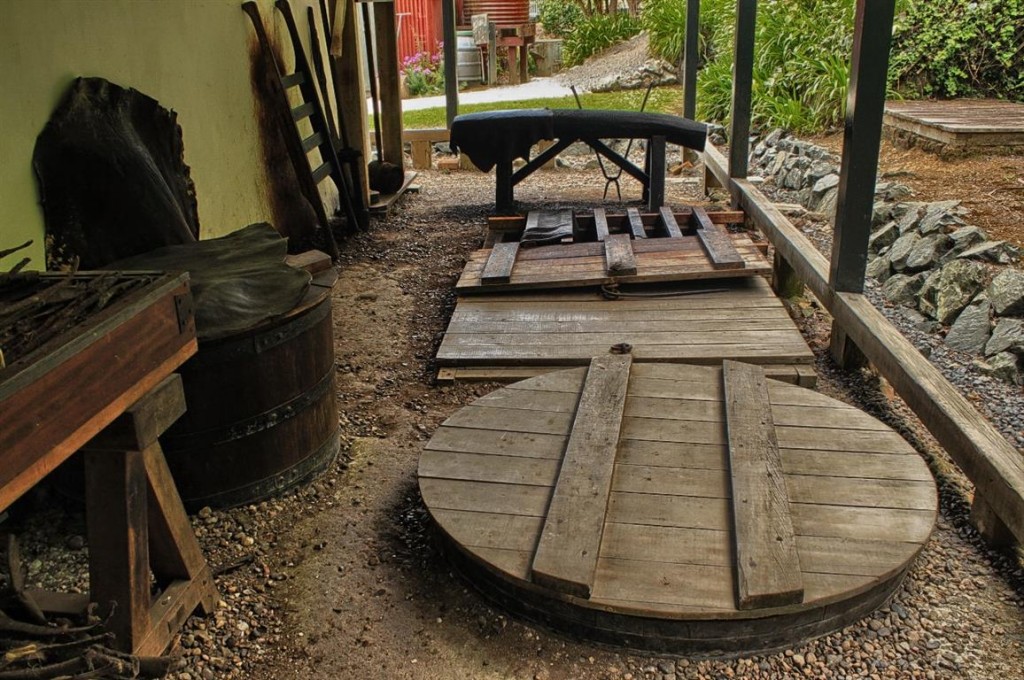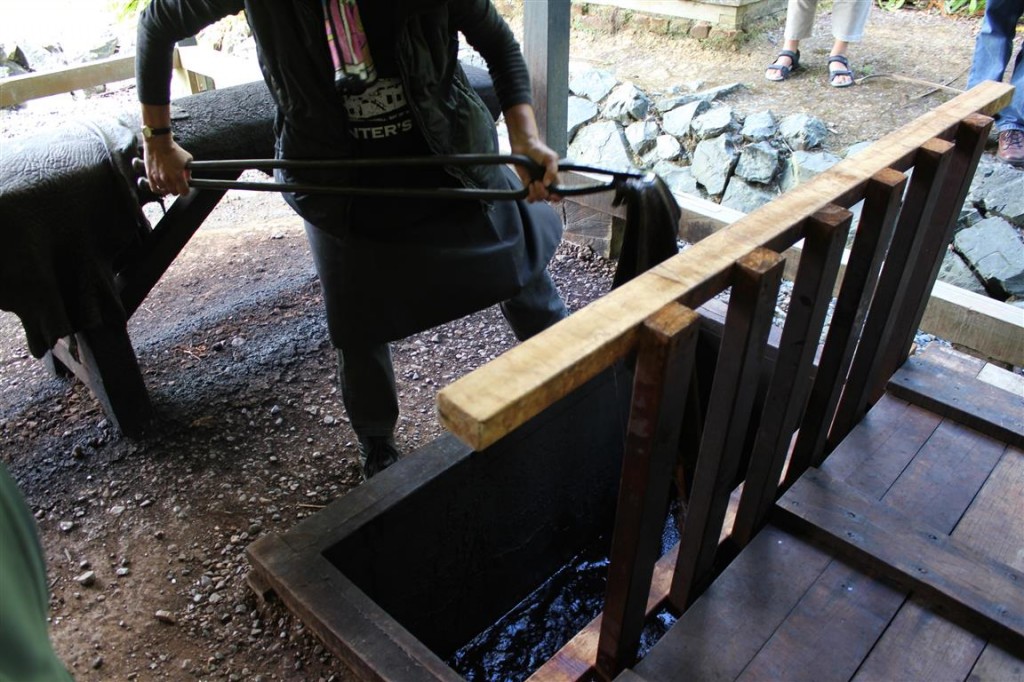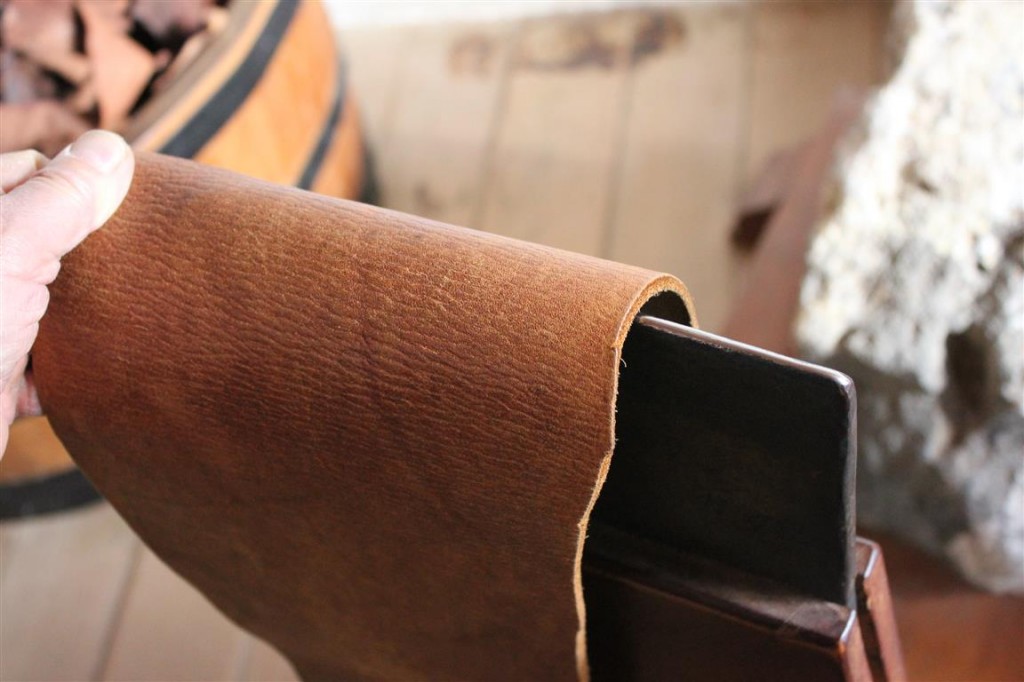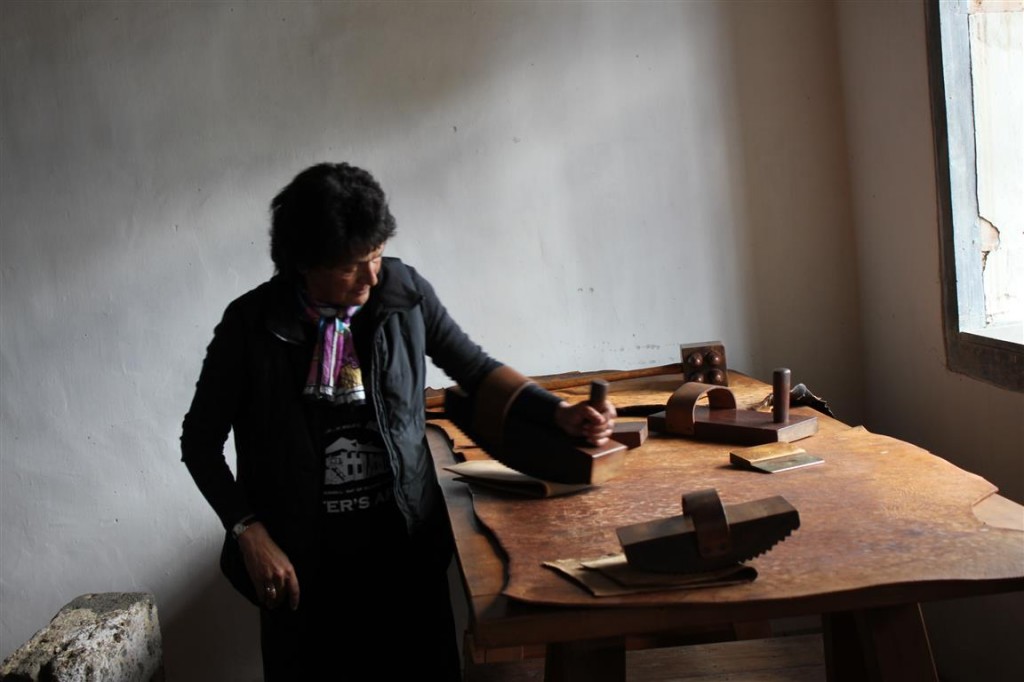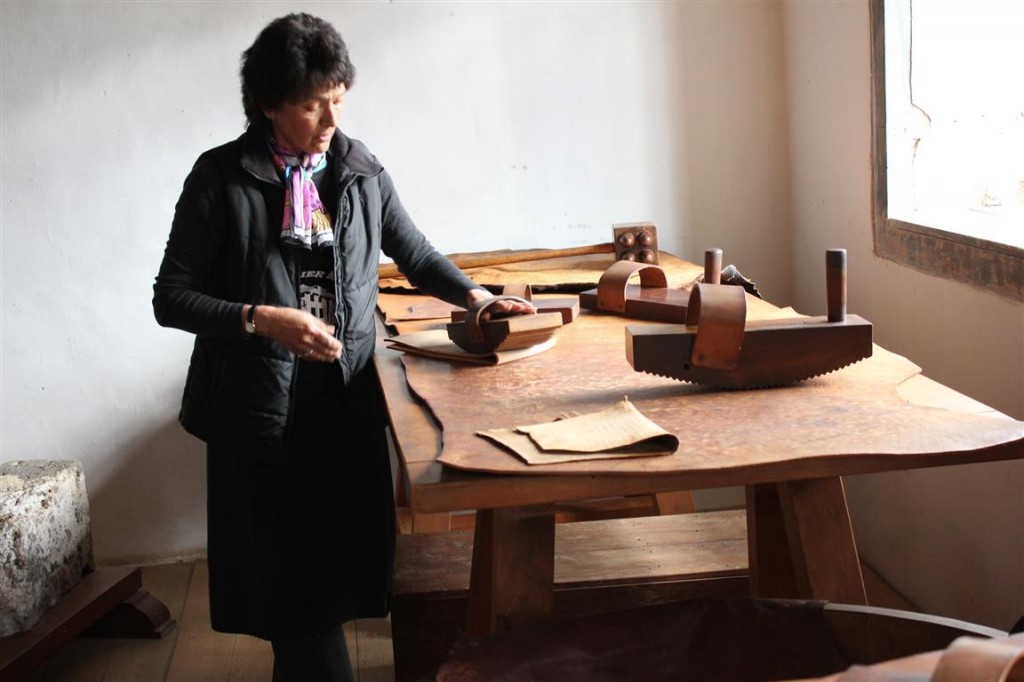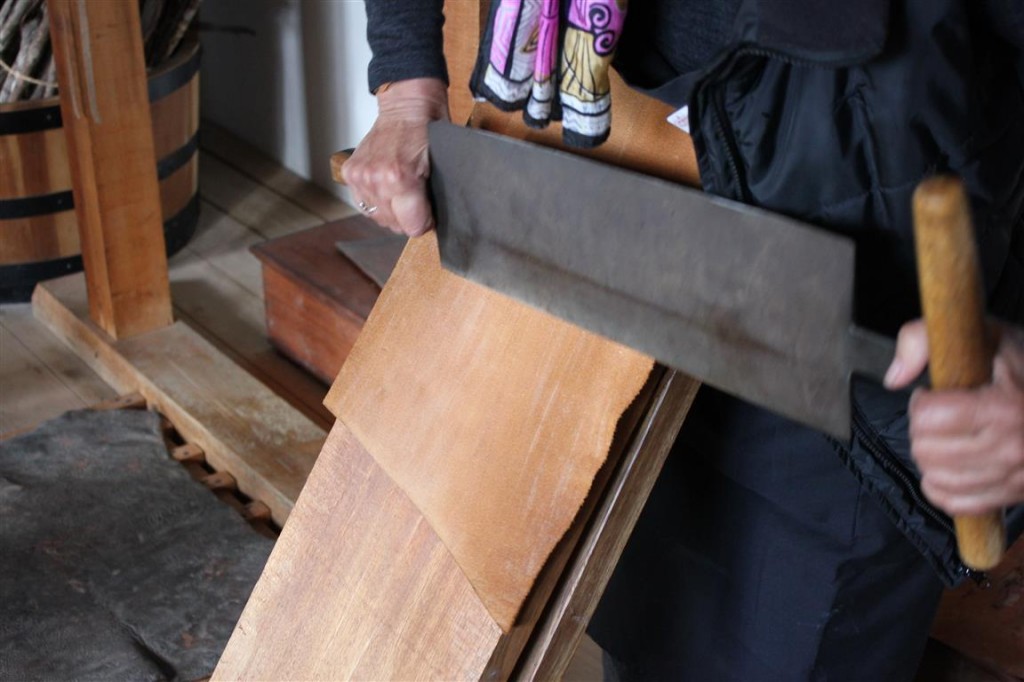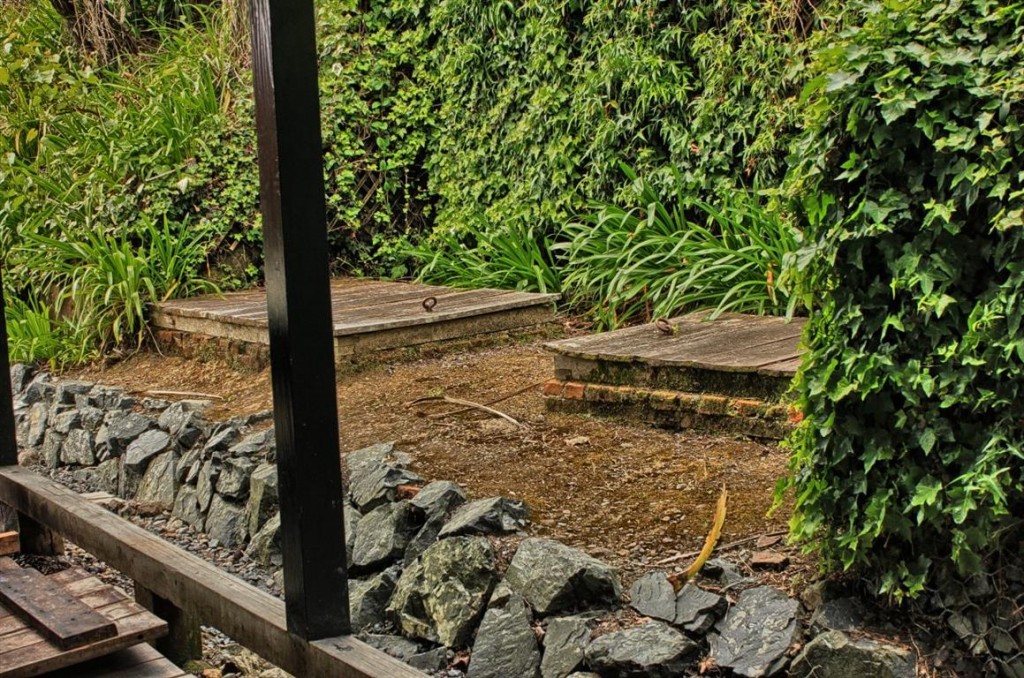Since I have had a lot to do with leather crafts, particularly shoemaking, I was fascinated to see the leather making process still in operation at Pompallier. Now the leather is made by some retired engineers, but originally it was made into leather for the military – in fact the main income for the business was the military contract. After Pompallier left the house was bought and the leather business continued under a new owner. This was highly profitable until the seat of government shifted from the bay of Islands to Auckland. As politicians will, they killed off the business in the Bay and forced it to go to Auckland by imposing large docking fees and punitive taxes on goods brought in elsewhere.
The process of leathermaking in the traditional way is long and timeconsuming – I hadn’t realised just how long until I saw it done here.
First the leather is soaked in vats of urine (takes a long time to fill these, so they say)
Then the hair is scraped off, and the fat and meat from the underside. The oils in the skin are also removed.
The hide is then soaked in vegetable dye – here they usea acacia bark, presoaked for months in water, in increasing strengths of solution. It takes a long time – 3-6 months for a lamb hide, up to 2 years for cattle. The hide is turned and inspected every week. Finally it is hung out to dry.
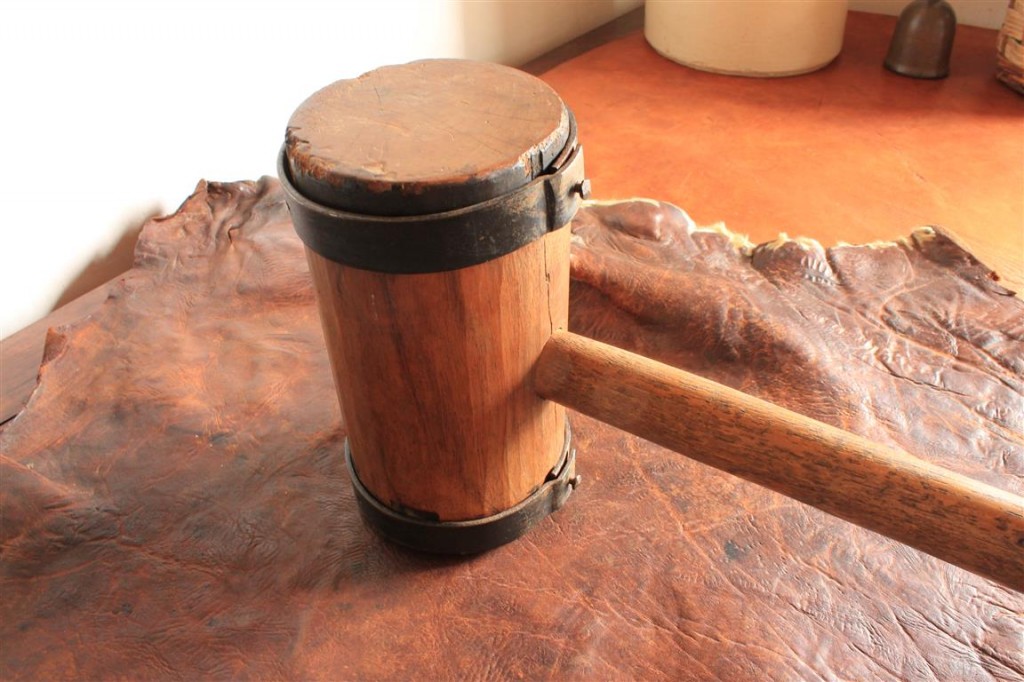
The dry hides are then worked with tallow, made by rendering the fats of animals. This is a labour intensive process involving flattening the leather, rubbing blocks on the hide to soften the fibres. The hide is also worked over a blunt knife.
Finally the hide is ‘skived’ where a sharp knife thins the hide down by cutting off the soft underskin – the suede. The skiving process is highly skilled, because at this stage a wrong move with the knife will destroy a hide that has taken many months to prepare. The origin of the colloquial use for the word ‘skive’ as lazy (‘skiving off’) comes from here – the workers doing the hard work softening the hides saw the ‘skivers’ cutting suede, a physically easy process, and ‘skivers’ became a pejorative term.
When the military moved the leather business became marginal, and finally a landslide buried the soaking vats at the back of the property and the owner shut down the works, and died soon after.
About 15 years ago when the house was being renovated these vats were rediscovered. The hides in them had been soaking in tannin and dye for 150 years, and yet was perfectly good when made into leather.

